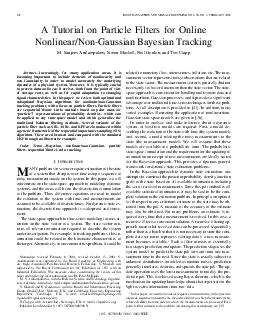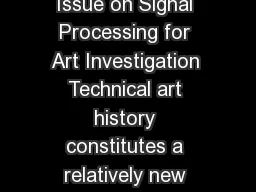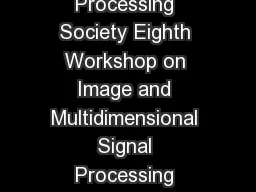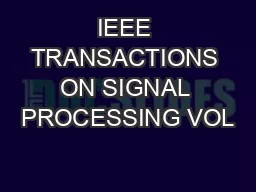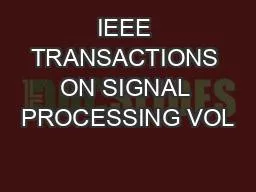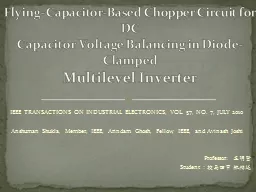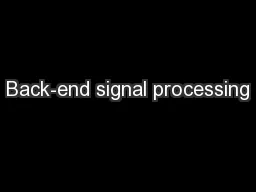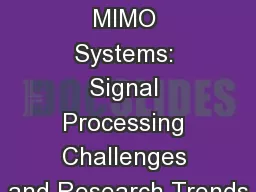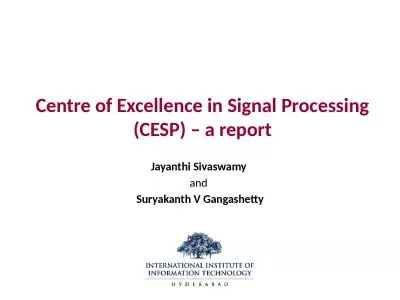PDF-IEEE TRANSACTIONS ON SIGNAL PROCESSING VOL
Author : luanne-stotts | Published Date : 2015-01-15
50 NO 2 FEBRUARY 2002 A Tutorial on Particle Filters for Online NonlinearNonGaussian Bayesian Tracking M Sanjeev Arulampalam Simon Maskell Neil Gordon and Tim Clapp
Presentation Embed Code
Download Presentation
Download Presentation The PPT/PDF document "IEEE TRANSACTIONS ON SIGNAL PROCESSING V..." is the property of its rightful owner. Permission is granted to download and print the materials on this website for personal, non-commercial use only, and to display it on your personal computer provided you do not modify the materials and that you retain all copyright notices contained in the materials. By downloading content from our website, you accept the terms of this agreement.
IEEE TRANSACTIONS ON SIGNAL PROCESSING VOL: Transcript
Download Rules Of Document
"IEEE TRANSACTIONS ON SIGNAL PROCESSING VOL"The content belongs to its owner. You may download and print it for personal use, without modification, and keep all copyright notices. By downloading, you agree to these terms.
Related Documents

